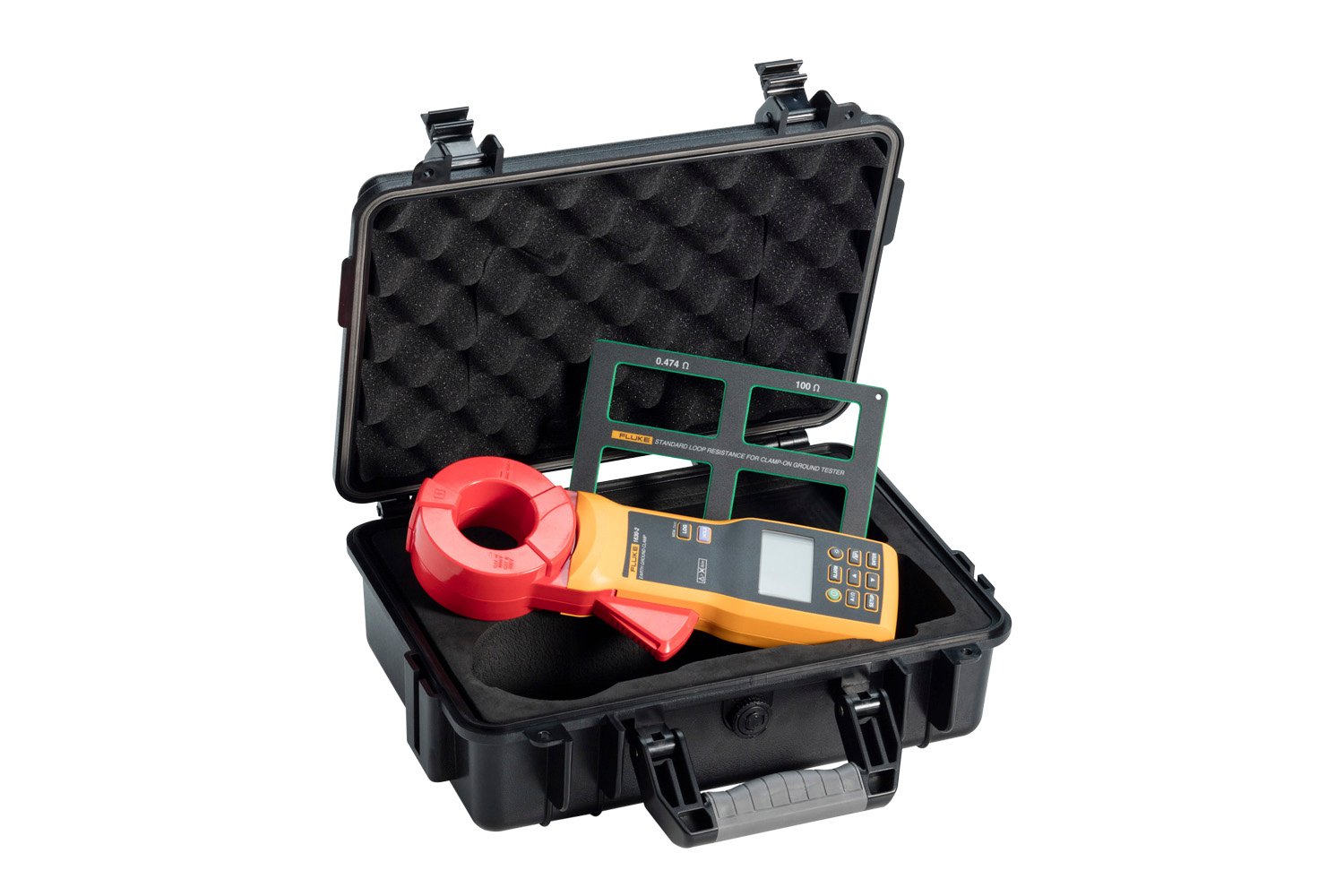Normal earth ground measurement involves disconnecting parallel grounding rods, "planting" several auxiliary grounding stakes, and using a earth ground tester to calculate the resistance of grounding system electrodes. Sometimes, though, there isn't anywhere to plant the grounding stakes - such as inside a building, at a cell phone substation, or on power pylons. What then?

With the Stakeless testing method, earth ground stakes aren't necessary. Place an earth ground clamp like the Fluke 1630 around the earth ground rod or the connecting cable. One half of the clamp will induce a known voltage while the other half measures current. The tester automatically determines the ground loop resistance at this grounding connection. You can also conduct continuity testing, leakage current measurement, and lighting protection system inspections much the same way, also without breaking the circuit.
Keep in mind: The Stakeless technique assumes that in parallel/multi-grounded systems, the net resistance of all ground paths will be extremely low as compared to any single path (the one under test). So, the net resistance of all the parallel return path resistances is effectively zero. Stakeless measurement only measures individual ground rod resistances in parallel to earth grounding systems. If the ground system is not parallel to earth, then you'll either have an open circuit or be measuring ground loop resistance.
The Fluke 1630 measures ground resistance from 0.025 to 1500 ohms and True RMS current flow from 0.02 to 35 A; and enables non-intrusive leakage current measurements from 0.2 to 1000 mA. It features a HI/LO alarm function to help users quickly compare the measured value against upper and lower limits, a display-HOLD function, a recording function that allows storage of measured values, and automatic self-calibration.